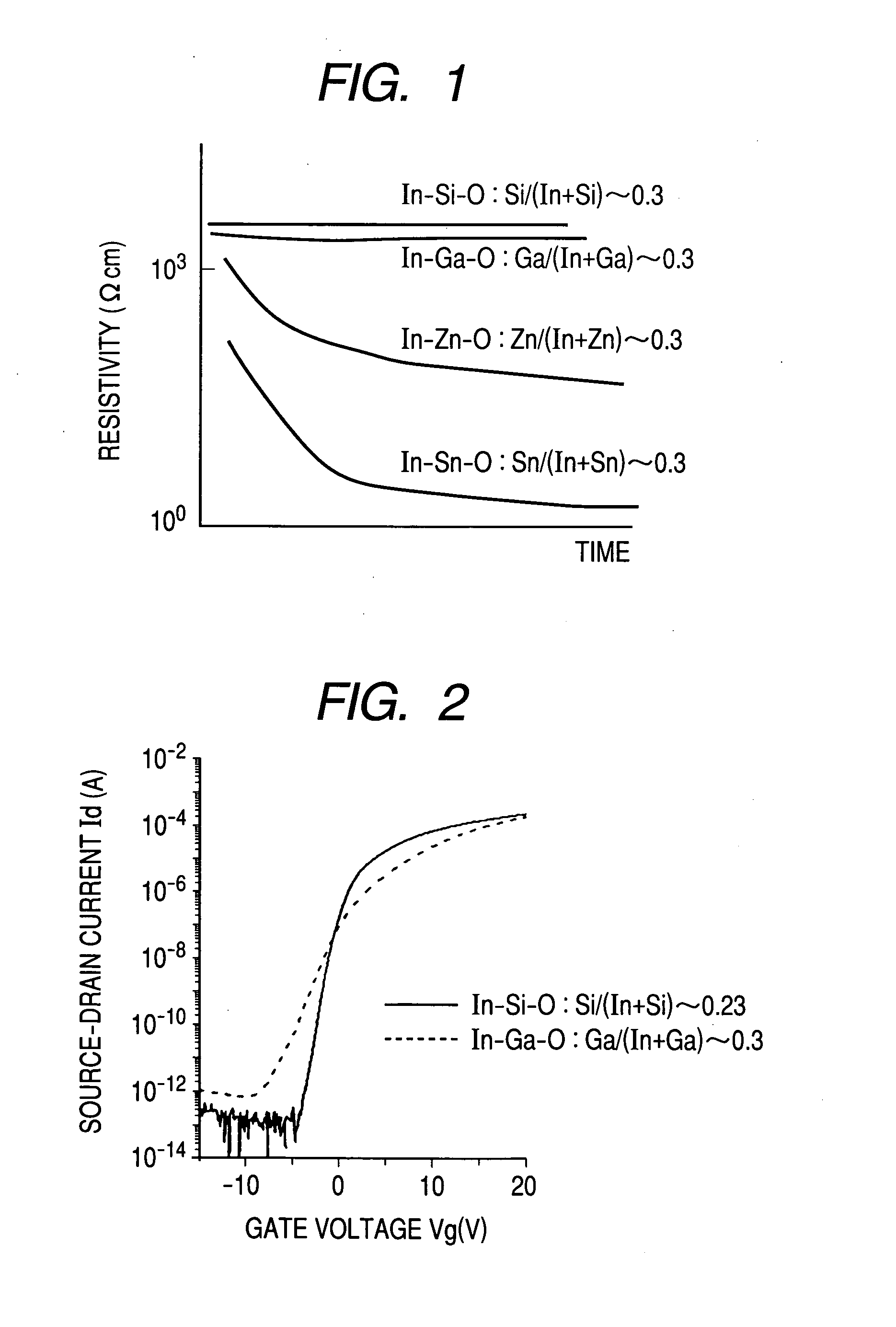Field effect transistor
- Summary
- Abstract
- Description
- Claims
- Application Information
AI Technical Summary
Benefits of technology
Problems solved by technology
Method used
Image
Examples
example 1
[0112]The present example is an example of producing a top gate type TFT illustrated in FIG. 3A in which a channel layer is an amorphous oxide of In—Si—O system.
[0113]At first, an amorphous oxide film of the In—Si—O system is formed as the channel layer on a glass substrate (product 1737 made by Corning Incorporated).
[0114]In the present example, the amorphous oxide film of the In—Si—O system is formed by radio-frequency sputtering method in the mixed atmosphere of argon gas and oxygen gas.
[0115]A sputtering film formation apparatus illustrated in FIG. 8 is used.
[0116]FIG. 8 includes a test sample 51, a target (material source) 52, a vacuum pump 53, a vacuum gauge 54, a substrate holding unit 55, gas flow controlling units 56 provided for respective gas introductory systems, a pressure controlling unit 57 and a film formation chamber 58.
[0117]The vacuum pump 53 serves as an exhaust unit for exhausting the gas from the interior of the film formation chamber 58. The substrate holding ...
example 2
[0138]The present example is an example of experimental study on the composition dependency of In and Si in a thin film transistor with a channel layer containing In and Si as the principal components.
[0139]In the present example, in order to study the material composition dependency of the channel layer, combinatorial method is adopted for film formation. That is, experimental study is made with a technique of producing thin films of oxides having various compositions on one substrate at one time by the sputtering method. However, this technique does not necessarily have to be used to study it. The film formation may be carried out by preparing a material source (target) having a predetermined composition. By controlling the input power to each of a plurality of targets, a thin film with a desired composition may be formed.
[0140]In—Si—O films were formed by using sputtering apparatus with three cathodes. Since the targets are arranged in an oblique direction relative to the substra...
example 3
[0170]The present example is an example of applying an amorphous In—Zn—Si—O oxide semiconductor to the channel layer.
[0171]In addition, the present example is an example of producing a TFT having a configuration shown in FIG. 3B on a plastic substrate.
[0172]A polyethylene terephthalate (PET) film is used as the substrate. The channel length of the transistor is 60 μm. The channel width is 180 μm.
[0173]At first, a gate electrode 15 and a gate insulating layer 12 are patterned and formed on a PET substrate 10 by the photolithographic method and the liftoff technique.
[0174]The gate electrode 15 is made of a Ta film with a thickness of 50 nm. The gate insulating layer is a SiOxNy film with a thickness of 150 nm formed by the sputtering method. The relative permittivity of the SiOxNy film is approximately 6.
[0175]Next, the channel layer of the transistor was patterned and formed by the photolithographic method and the liftoff technique. The channel layer is made of an amorphous oxide 11a...
PUM
| Property | Measurement | Unit |
|---|---|---|
| Ratio | aaaaa | aaaaa |
Abstract
Description
Claims
Application Information
 Login to View More
Login to View More - R&D
- Intellectual Property
- Life Sciences
- Materials
- Tech Scout
- Unparalleled Data Quality
- Higher Quality Content
- 60% Fewer Hallucinations
Browse by: Latest US Patents, China's latest patents, Technical Efficacy Thesaurus, Application Domain, Technology Topic, Popular Technical Reports.
© 2025 PatSnap. All rights reserved.Legal|Privacy policy|Modern Slavery Act Transparency Statement|Sitemap|About US| Contact US: help@patsnap.com



